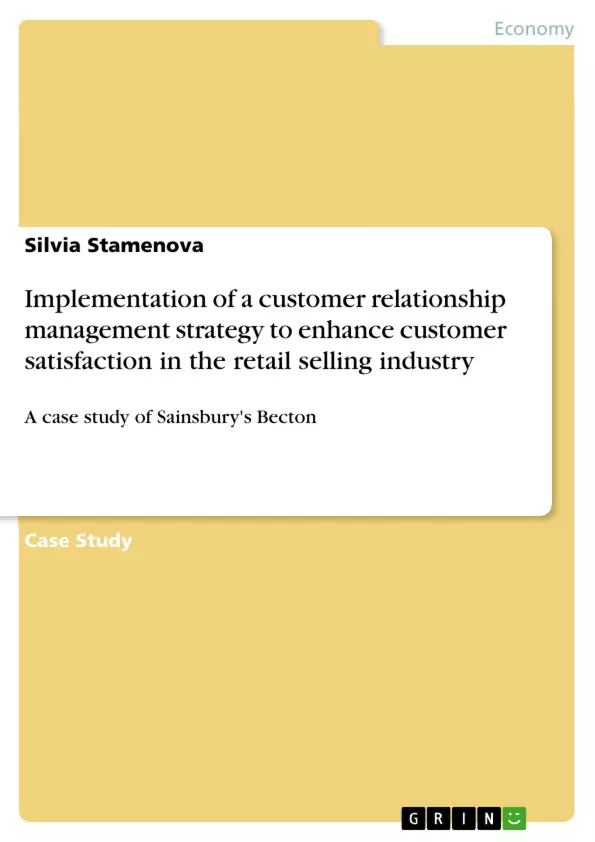The research questions posed in this paper relate to the following: What strategies need to be established in order for Sainsbury to develop close connection with its customers? What is their efficacy in the implementation of a CRM strategy? What are the future opportunities, standing in front of the retail seller?
In this regards, the methodology used will be mainly quantitative. In its essence the quantitative research focuses on the numbers. Its basic aim is to measure quantity or amount and compare it with past records; the latter is all done with the aim to project for the future. In addition, the collection of data required was done by distributing the questionnaires to the visitors of Sainsbury, Beckton. The respondents to the questionnaire were chosen at random. However, the primary focus of the research was on shoppers aged 25-60 years of age. This resulted in 40 key informants who agreed to participate and fill in the previously designed questionnaire, containing closed, as well as open-ended questions and having a section for recommendations and personal opinions. However, the major hindrances, standing in front of the research are the low level of response rate, literary bias and the fact that the research is focused on only one shop. Simply put, the researcher's expectation about the response rate of the survey was at about 35%.
Inhaltsverzeichnis (Table of Contents)
- 1.0 Introduction
- 2.0 Main Literature
- 3.0 Methodology
- 3.1 Discuss in detail types of methodologies used in research (quantitative and qualitative)
- 3.2 Explain types of research techniques/approaches (quantitative and qualitative)
- 3.3 Discuss your means of data collection
- 3.4 Data analysis and interpretation
- 4.0 Discussions and findings (Critical review of the results of the research)
- 5.0 Recommendation and action plan
- 6.0 Conclusion
Zielsetzung und Themenschwerpunkte (Objectives and Key Themes)
This paper aims to design a strategy to fulfill customer expectations, understand their desires and needs, and establish an effective mechanism for implementing a customer relationship management (CRM) strategy. The research questions focus on strategies to develop close connections with customers, the efficacy of CRM implementation, and future opportunities for the retailer.
- Customer relationship management (CRM) strategy and its implementation
- Customer satisfaction and its impact on retail selling
- The role of technology in enhancing customer service
- The impact of competition and market dynamics on CRM
- The benefits and challenges of implementing a CRM strategy
Zusammenfassung der Kapitel (Chapter Summaries)
- 1.0 Introduction: This chapter sets the context for the research by highlighting the challenges faced by Sainsbury, including competition, changing customer demands, and the impact of Brexit. The paper's objectives and research questions are presented.
- 2.0 Main Literature: This chapter explores the concept of customer relationship management (CRM) strategy and its relevance in the modern business landscape. It discusses the importance of CRM in improving customer relationships, enhancing customer satisfaction, and achieving competitive advantage.
- 3.0 Methodology: This chapter outlines the research methodology used in the paper. It focuses on quantitative research methods, data collection techniques, and data analysis approaches. The chapter also discusses the limitations of the research, including the low response rate and focus on a single shop.
- 4.0 Discussions and findings: This chapter presents a critical review of the research findings. It analyzes the data collected and discusses the implications for Sainsbury's CRM strategy.
Schlüsselwörter (Keywords)
The main keywords and focus topics of this text are: customer relationship management (CRM), customer satisfaction, retail selling, competition, market dynamics, technology, data analysis, quantitative research, and Sainsbury.
- Quote paper
- Silvia Stamenova (Author), 2017, Implementation of a customer relationship management strategy to enhance customer satisfaction in the retail selling industry, Munich, GRIN Verlag, https://www.grin.com/document/387023



